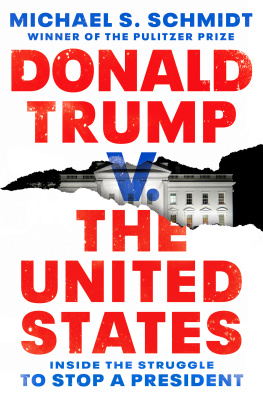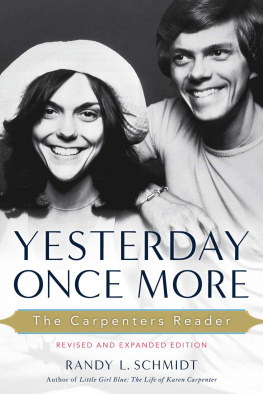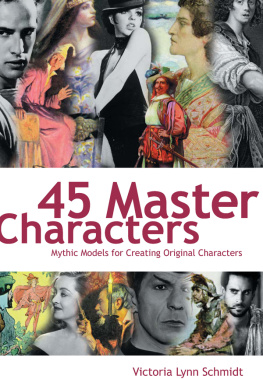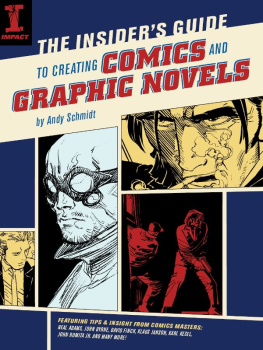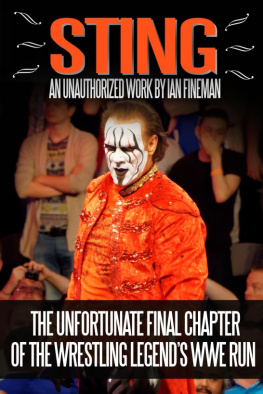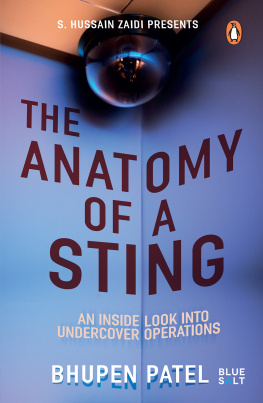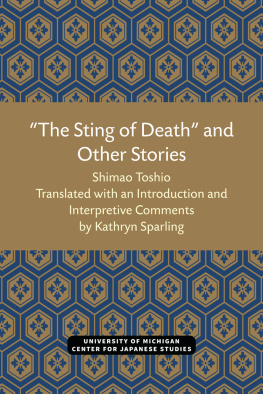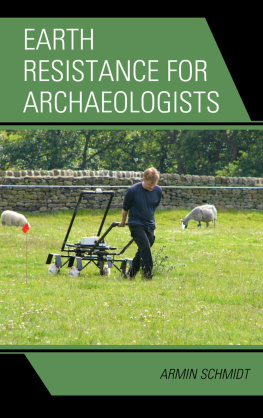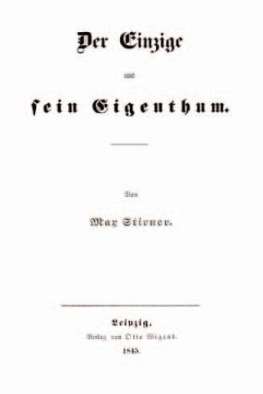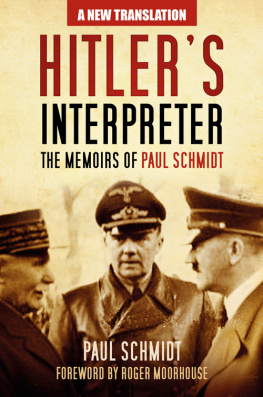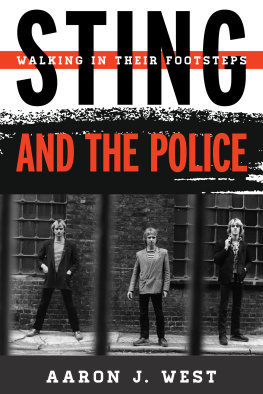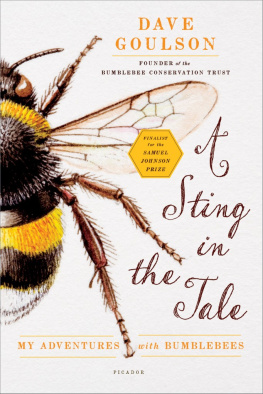THE STING OF THE WILD
THE STING OF THE WILD
JUSTIN O. SCHMIDT

2016 Johns Hopkins University Press
All rights reserved. Published 2016
Printed in the United States of America on acid-free paper
2 4 6 8 9 7 5 3 1
Johns Hopkins University Press
2715 North Charles Street
Baltimore, Maryland 21218-4363
www.press.jhu.edu
Library of Congress Cataloging-in-Publication Data
Schmidt, Justin O., 1947 author.
The sting of the wild / Justin O. Schmidt.
pages cm
Includes bibliographical references and index.
ISBN 978-1-4214-1928-2 (hardcover : alk. paper)
ISBN 978-1-4214-1929-9 (electronic)
ISBN 1-4214-1928-9 (hardcover : alk. paper)
ISBN 1-4214-1929-7 (electronic)
1. Poisonous arthropoda. 2. Insect pests. I. Title.
QL434.45.S36 2016
595.7165dc23 2015026989
A catalog record for this book is available from the British Library.
Special discounts are available for bulk purchases of this book. For more information, please contact Special Sales at 410-516-6936 or .
Johns Hopkins University Press uses environmentally friendly book materials, including recycled text paper that is composed of at least 30 percent post-consumer waste, whenever possible.
To Debbie and Li
CONTENTS
PREFACE
L ETS SADDLE UP and embark on an adventure. This adventure will be in our minds, not in the thorns, mosquitoes, and sweat of the real world. Cheating? Perhaps. But dont all adventures take place in our minds as well as in our bodies? The adventure starts a million and half years ago in the savannas and open woodlands of Africa. Our band of 25 is relaxing at the base of a kopje, a large rock hill protruding from the open land. A few experienced men sit atop the kopje, scanning the landscape for potential threats and opportunities. Maybe there are some nearby lions to avoid, or a leopard lurking in a tree next to our path to the water hole, or maybe half a dozen raiders of a neighboring band are heading our way. Today is a good day with none of those threats; instead, we spy a just-born baby giraffe that appears unable to walk. Alert all boys over the age of 5 to accompany and learn from the experienced men how to seize this opportunity to feed the group a valuable treat of fresh meat. Three of the strongest men sprint-lope toward the distant giraffe to secure it from hyenas or lions that might also take note. Fortunately, no lions or hyenas had arrived on the scene, only circling jackals awaiting scraps after a kill.
Two older men and an older boy rally the eager younger boys to follow and assist the experienced men ahead of them. As we hurry along through the grass, we remember that lions, leopards, and hyenas are not the only threats. Hey, what is that sinuous movement just to the left? Snake! Caution. Years ago an adventurous youngster was bitten by a snake, and he died. Snakes are dangerous. Maybe some snakes are not dangerous. But enough snakes are dangerous that all must be feared and avoidedbetter safe than sorry. That problem avoided, the trip continues. We pass under a baobab tree. Ouch, what stung me? Run, a beehive is located in the tree, and the bees are unhappy. Bees, too, can be a threat. We note the location and alert the advance men, who have driven off the mother giraffe with rocks and threatening sticks and are now butchering the young giraffe to bring back to the group. After returning to camp, the boys lead the excited men with their smoking torches to the beehive location and then stand back to watch. Two main honey hunters climb the baobab with their torches to chase away and rob the bees of their precious honey and combs of brood. The rest of us have learned that bees, like snakes, are inherently frightening and dangerous, and caution is required if we are to survive and be healthy.
Our adventure is imaginary, but its message is real. Animals that can kill or hurt us are to be feared and treated with caution or avoided outright. For millions of years, our ancestors, whether human or protohuman, encountered dangerous animals, some large and powerful, some smaller but deadly, and some tiny but also able to inflict harm. These dangerous encounters indelibly etched innate fear of potentially harmful animals in our genes. We carry those genes with us to this day.
In this book, I hope to share a love of the natural world and the beauty of all forms of life. Each animal has its own inherently interesting story to tell. Each story is awaiting our attention to be told. I was fortunate to be able to explore many adventures with some of the most beautiful and fascinating insects on earthstinging insects. Stinging insects provide a wondrous insight into a variety of lifestyles and solutions to their own day-to-day survival challenges.
The book is organized in two general sections. The first section comprising provides the background and theory that enhance the following chapters. The second, and larger, part is a series of chapters that go in-depth into one particular small group of insects. The reader is encouraged to skip around and read chapters in any order, as each chapter is intended to stand mainly on its own. Start at the beginning, or pick a favorite and jump in.
I have a confession to make. The writing is littered with numerical superscripts. These are references to the sources of information and can be andI might argueshould be ignored unless something piques particular interest. I beg that these numbers not be too much of a nuisance. Lets go. I hope you enjoy the ride as much as I did.
T HIS WRITING WOULD NOT have been possible without the help of numerous people. Throughout my career, I have enjoyed many engaging and fruitful discussions about biology and stinging insects with numerous colleagues and friends, especially Steve Buchmann, Bob Jacobson, Bill Overal, Roy Snelling, Hayward Spangler, Chris Starr, and Murray Blum. Their ideas and discussions have enriched this book. I am indebted to John Alcock, Craig Brabant, Mathias Buck, Jim Cane, Joe Coelho, Eric Eaton, Kevin ONeill, and Rolf Ziegler for providing information and fact checking for sections of the writing. In addition to providing ideas and information, Denis Brothers, Deby Cassill, Bill McGrew, Jon Harrison, Chuck Holliday, Jenny Jandt, Bob Jacobson, and Richard Wrangham critically read and helped improve various chapters. Louise Shaler, Elizabeth Taylor, and Tom Wiewandt encouraged me and aided in numerous ways to improve clarity, understanding, and presentation of the writing. Particular thanks to Margarethe Brummermann, Jillian Cowles, and Graham Wise for sharing and permissions to use their photographs.
I would be remiss not to mention my editors, especially Vincent J. Burke and the tremendously talented team at Johns Hopkins University Press. I am immensely grateful to Vincent for his unwavering encouragement, support, and toleration of me throughout the writing. Without him, neither this book nor my joy (most of the time) in writing it would have been possible. Finally, I am indebted to my personal editor, adviser, and colleague Bob Jacobson who greatly helped in all aspects of the writing from sentence structure and spelling to presentation of the manuscript.
THE STING OF THE WILD
STUNG
Children are born naturalists.
C HILDREN ARE BORN NATURALISTS whose play is exploration of the environment surrounding them. Throughout most of human history, that surrounding environment was nature itself, a nature filled with sights, sounds, and smells of plants, animals, and the landscape. To the child, the ant walking in the play area or nipping at a food scrap was an object of interest. Equally interesting was the nearby flower with its intriguing bee, busy collecting nectar and pollen, and the lurking crab spider on the flowers edge. To the growing brain, these experiences were exciting and valuable. At this youngest stage of life, fear is muted. Fear is mostly learned by play experiences and from nearby parents and adults. For their part, the adults in the community realize that play and learning are crucial for the developing young mind and encourage or allow mostly unrestricted play for the first five years. Play transforms the young human into an aware, observant, analytical, and adaptable individual prepared to face the world as an experienced, functional adult. But ever watchful adults are vigilant in making the environment secure for children to explore and learn in safety.
Next page

